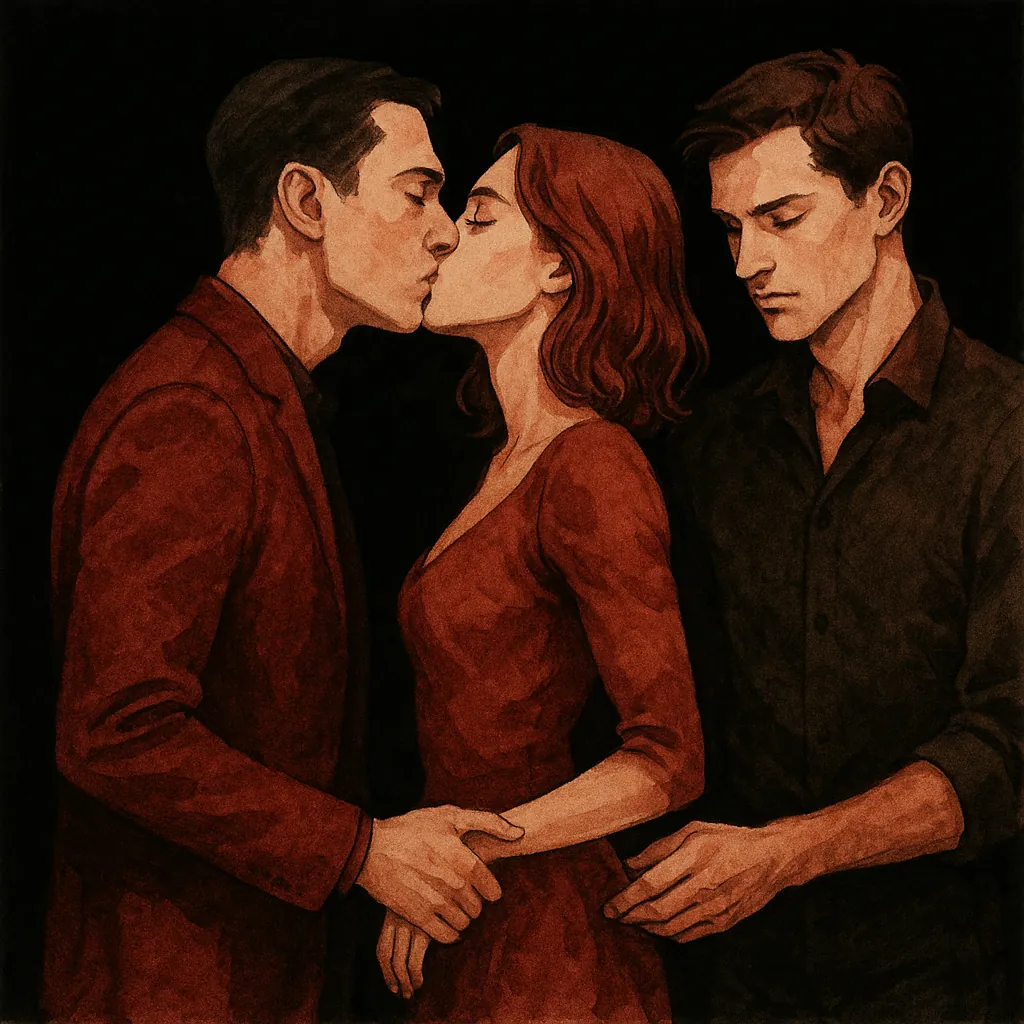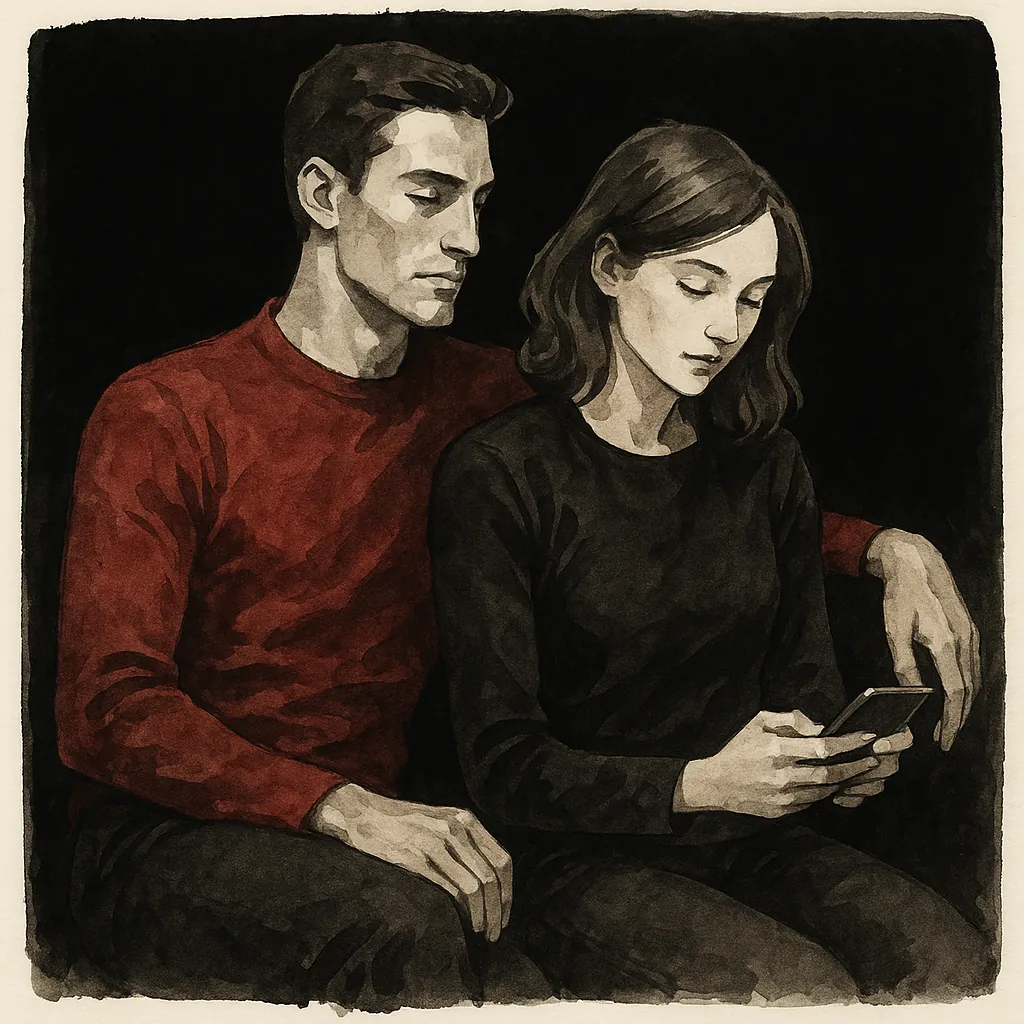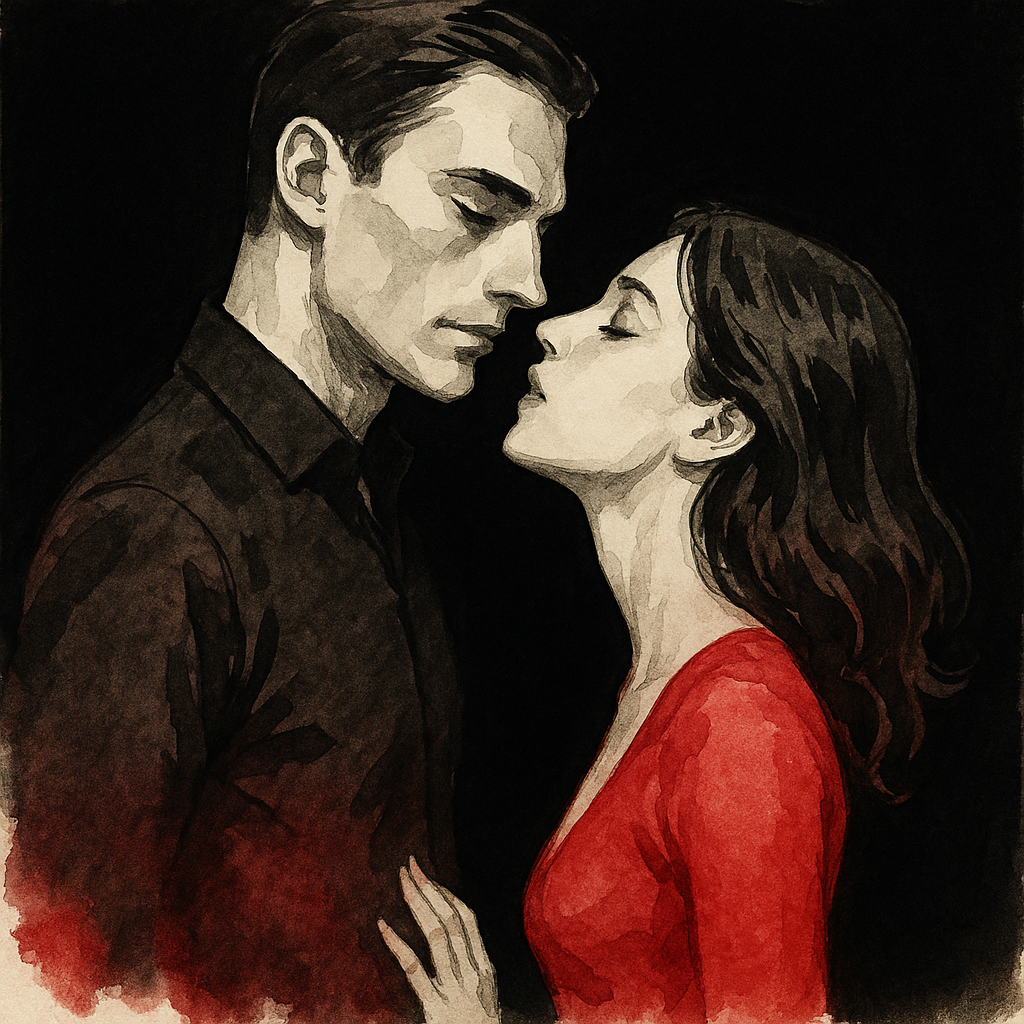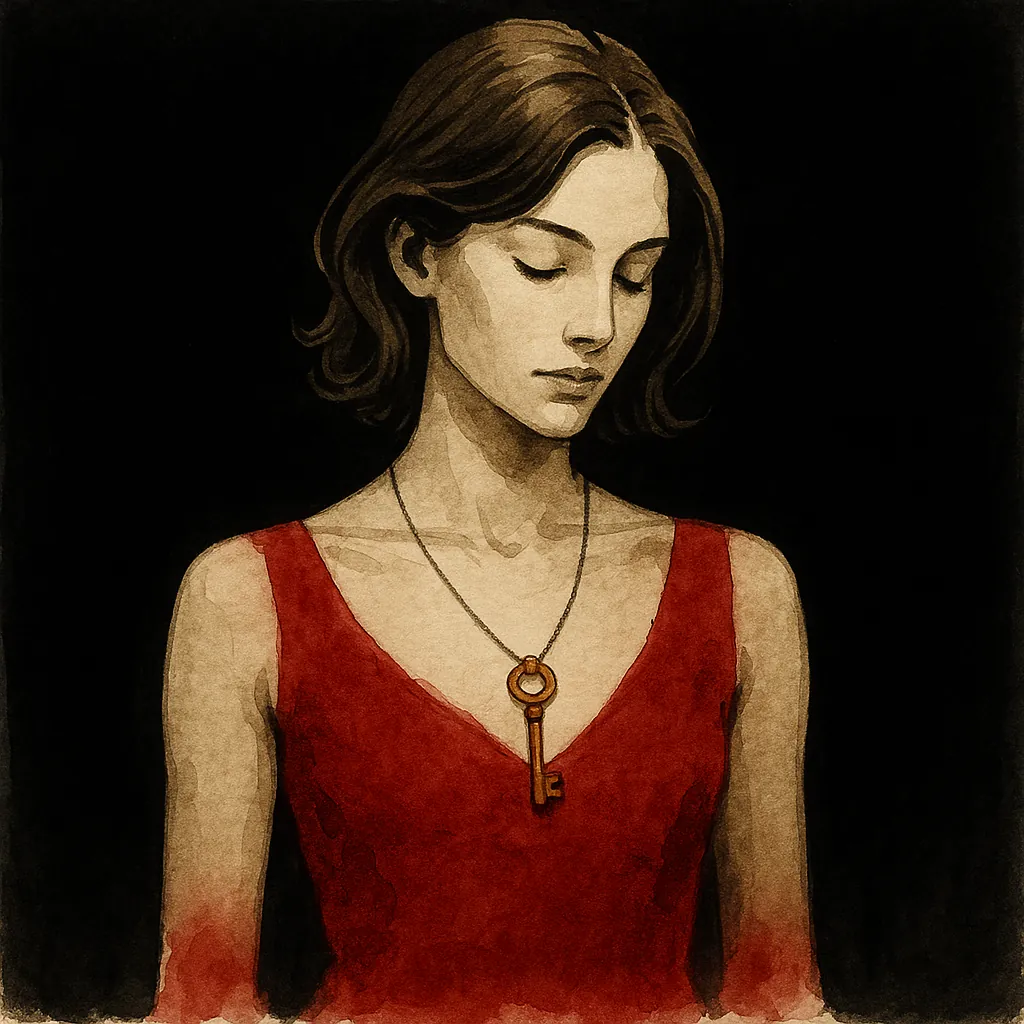What is a Hotwife anklet?
In simplest terms, a hotwife anklet is an ankle bracelet some couples and communities use as a discreet symbol to say: "I'm partnered, and with my partner's blessing I may be open to erotic play with others." It's not a universal code; it's community lore. Many wear anklets purely for fashion. Others infuse them with meaning, often adding charms that carry additional signals (we'll get there).
Curious about exploring consensual non-monogamy with your partner? The BeMoreKinky app features dedicated sections for cuckolding and group play activities, with over 40 ideas and scenarios to help couples communicate desires and boundaries around opening their relationship in exciting, consensual ways.
First principles: what does hotwife mean?
Hotwife generally refers to a woman in a committed relationship (often married) who has sexual experiences with others with her partner's full knowledge and consent. This dynamic sits under the umbrella of consensual non-monogamy (CNM), which emphasizes transparency, negotiated boundaries, and mutual care, distinct from infidelity. Mainstream overviews and research describe CNM as a legitimate relationship structure practiced by a minority but meaningful portion of the population. Estimates vary, but large surveys and reviews suggest that about 1 in 9 to 1 in 5 Americans have engaged in some form of CNM at some point, and roughly 4 to 5% are currently in CNM at any time.
In the broader conversation about modern relationships, Esther Perel reminds us that long-term intimacy today asks couples to be "both secure and free," to reconcile commitment with curiosity, a tension CNM couples explore explicitly.

So… what is a hotwife anklet?
A concise description that circulates in lifestyle writing is: the anklet can serve as an invitation to conversation, not a promise of sex. One widely shared explainer puts it this way: "A hotwife wearing an ankle bracelet is sending a symbolic message… that her husband is giving his consent to men to approach her and talk to her. That's all."
Key nuance: There is no standard everyone agrees on. Some communities use it, some don't, and many people wearing anklets have zero connection to CNM or swinging. Even within swinger forums, you'll see debate about whether anklets (or pineapples, or black rings) "really mean anything" outside of lifestyle spaces.
A quick detour: anklets long before “hotwife”
Anklets have deep histories across cultures: in India, anklets (payal) are traditional adornments and can be gifted to brides; in ancient Egypt, foot jewelry signaled status and sometimes served amuletic functions. In many places, anklets simply express beauty, dance, or devotion. None of that is inherently sexual or CNM-coded.
This matters because context shapes meaning. Wearing an anklet to a beach brunch is not the same as wearing one to a swinger hotel takeover. The same object, different stage.
Which ankle? Right, left… does it matter?
You’ll see conflicting folklore:
-
Right ankle: Often cited in lifestyle blogs and threads as a subtle indicator of hotwife/swinger openness (especially at lifestyle events).
-
Left ankle: Sometimes suggested to have other meanings, or none at all; many sources emphasize fashion over code.
Even within swinger Reddit, a common refrain is skepticism: signals like anklets or pineapples are not reliable in the wild. Better to look for context (events, clubs) and, radical thought, start a respectful conversation. As one redditor put it, "There are no universal signs… If you want to find swingers, go where they are like clubs or swinger websites."
Therapist’s lens: Use signals as internal rituals (a shared secret, a confidence booster) and as external cues only in opt-in spaces. Everywhere else, read them as fashion unless explicitly invited to do otherwise.
Charms 101: what people add, and why it matters
Think of charms as subtitles beneath the anklet’s headline. Common ones include:
- Key / Padlock
Shorthand for consent, ownership fantasy, or "keyholder" dynamics, sometimes linked to cuckold/hotwife scripts where a partner "holds the key" (similar to keyholder dynamics in chastity). The symbolism is about permission and shared power, not property.

-
Pineapple (often upside-down)
A widely memed swinger emblem that began as "hospitality" and evolved into a wink within certain communities, seen on jewelry, shirts, cruise ship décor. But it's overused and easily misread; treat it as playful decor more than a binding contract. -
Queen of Spades (Q♠)
A controversial symbol. In some hotwife/cuckold spaces it's used to signal interracial interest with Black men; many criticize it as racial fetishization. If you're even considering this charm: pause, educate, and talk to Black partners/friends. Symbols carry history and harm. -
Hearts / Infinity
Often used to center love, devotion, and long-game commitment amidst erotic adventure, good for couples who want the anklet to anchor connection, not just novelty. -
Vixen / Fox, "Stag & Vixen" symbols
Drawn from the language of stag-and-vixen dynamics; you'll find many boutique sellers offering vixen charms marketed to hotwife couples. -
Medical-style charms (e.g., STI testing dates)
Not common as jewelry, but some couples integrate safety signals (verbal or digital) into their ritual, reminding us that symbolism is sexiest when it aligns with health and care. -
Personal talismans
Initials, coordinates, meaningful dates. Symbols are most powerful when they’re yours, anchored in your story, not just internet lore.
A quick reminder: retailers and blogs often market meanings. Use them as ingredients, not gospel.
What the Reddit hive mind says (and doesn’t)
Reddit is a mixed bag, but it’s useful for capturing community talk and myth-busting. Two threads illustrate the spectrum:
"There are no universal signs… If you want to find swingers go where they are like clubs or swinger websites." , r/Swingers
You'll also find enthusiastic believers, "right ankle = hotwife", and skeptical fashion folks who roll their eyes at secret codes. Both exist.
Takeaway: Treat online claims as contextual folklore, not universal rule.

What does a hotwife anklet symbolize emotionally?
Think less traffic signal, more ritual of meaning:
-
Mutual trust
Wearing a symbol with your partner's blessing can be a public-private oath: "We are secure enough to play." Psychology and therapy perspectives on CNM emphasize that transparency and negotiation, not novelty, predict well-being. -
Erotic sovereignty
For some women, the anklet embodies sexual autonomy within a bonded partnership: "I own my desire; we own our agreements." Many hotwife explainers and lifestyle pieces frame it as empowerment through choice, not compliance. -
Curiosity and play
A talisman can lower the bar to playfulness, what Perel often calls moving from duty to discovery. If your anklet invites a flirtatious glance that turns into an honest conversation, it's working. -
Shared identity
For some couples, the charm set becomes a living scrapbook of what they’ve negotiated, tried, loved, or retired.
Ethics: the difference between erotic codes and ethical conduct
A symbol is never consent. It's not even a reliable invitation. At best, it's a conversation starter inside opt-in spaces (clubs, hotel takeovers, lifestyle cruises). Swinger communities repeatedly caution against approaching strangers in public solely based on symbols. The etiquette is to ask, not assume, and to prioritize discretion.
A few therapist-style guidelines:
-
Make the meaning first, wear the symbol second.
Before buying charms, co-author the story: What does this anklet mean to us? When and where does it apply? What would be too much, too fast? If you're new to non-monogamy, consider reading our guide on how to open an existing relationship first. -
Context is consent-adjacent.
An anklet at a CNM-friendly event reads differently than the same anklet at your kid’s school fair. Agree on contexts where the anklet is active and where it’s purely decorative. -
Boundaries > codes.
Codes are cute; contracts are safer. Decide together how to handle approaches, chat boundaries, condoms, testing, aftercare, and who tells whom, what, and when. General ENM guides emphasize this groundwork. For more on setting healthy boundaries, see our BDSM boundaries guide.
Need help establishing boundaries for consensual non-monogamy? The BeMoreKinky app includes specific cuckolding scenarios and dirty talk phrases that can help you and your partner explore what aspects of the hotwife dynamic excite you both while maintaining clear boundaries. For those interested in female-led dynamics, our femdom guide to cuckold dirty talk offers specific techniques for verbal domination and power exchange.
-
Check your symbolism for harm.
If a charm (e.g., Queen of Spades) intersects with racial fetishization, consider the social and historical weight. Curiosity is human; fetishization dehumanizes. Choose symbols that honor people, not categories. -
Expect stigma; build resilience.
CNM still carries social stigma, which research links to stress. If you're "out" or semi-out, have a plan for privacy, digital footprints, and support.
How couples actually use the anklet (scripts you can borrow)
If the anklet is your shared ritual, here are conversation scripts to co-create its meaning (for more guidance on intimate conversations, explore our communication guides):
-
Ritualizing the moment
“When you clasp it on my ankle before we go out, it signals we’re aligned. If either of us isn’t feeling it, we unclip it, no questions asked.”
(This builds safety into the symbol.) -
“Approach policy”
“If someone asks about it, we smile and say it’s personal; if we’re in a lifestyle space, we can answer more directly.”
(Set rules for public vs. private contexts.) -
Charms as milestones
“A heart charm means we’re centering us tonight; a key means we’re open to conversation; we never wear the pineapple charm outside events.”
(Use charms to modulate signals.) -
Opt-out clause
“Green/yellow/red.” If either of you calls yellow, the anklet’s meaning downgrades to “just jewelry”. (Borrowed from kink safety frameworks.)
Remember: the anklet is a prop; the play is connection.

Common misunderstandings (and the truth)
"If you wear one, you're inviting sex."
No. At most, you're inviting conversation in the right space. Even lifestyle articles emphasize that an anklet signals openness to talk, not a sexual obligation.
"Right ankle means hotwife. Period."
Sometimes. In some circles. But there's no ISO standard for ankles. Community replies frequently stress that signals vary and are often over-interpreted.
"Pineapple = guaranteed swingers."
Nope. It's pop-culture shorthand, and often just a fruit on a shirt. Even swingers advise against relying on it in everyday settings.
"Anklets always had this meaning."
Not historically. Anklets have millennia of cultural uses entirely unrelated to CNM.
How to choose (or design) a hotwife anklet
1) Start with intention.
What do you want the anklet to evoke in you, confidence, erotic audacity, tenderness? Let intention inform materials (delicate vs. bold), which ankle, and whether you’ll wear it only in certain spaces.
2) Select charms intentionally.
-
Key/padlock if you want to foreground consent and shared authorship.
-
Skip Queen of Spades unless you've done real homework and had thoughtful conversations about race and desire.
-
Pineapple is fun and campy, best reserved for opt-in environments (club nights, takeovers, cruises).
3) Comfort is sexy.
Practical notes from jewelry folks: chain type and finish matter, avoid styles that chafe your Achilles if you walk a lot. (Yes, people on Reddit really discuss this level of detail.)
4) Make it yours.
Engrave a date, add a lock you both can touch before going out, or pair it with a matching but non-coded piece your partner wears (e.g., a subtle bracelet). Rituals work because they tether meaning to action.
Where the anklet sits in the bigger CNM picture
A symbol can help couples stay aligned with the three pillars research and practice consistently point to in CNM, which encompasses diverse dynamics from hotwifing to cuckquean arrangements where partners explore arousal through each other's experiences:

-
Radical honesty and negotiated boundaries
(What's on the table, what's off, and how often you renegotiate.) -
Stigma-wise coping
(Knowing when to be private, where to seek community, and how to protect jobs/family if needed.) -
Ongoing consent
(Desire is dynamic; agreements must be, too, what Perel might call "a conversation that evolves".)
A note on race, symbols, and care
It's tempting to treat every charm as playful. Yet some symbols, especially the Queen of Spades, carry histories that can objectify Black men and reinscribe harmful tropes. Even Wikipedia and popular discourse flag the term's racially charged usage today. If your erotic script includes interracial play, consider signaling in words, not in shorthand that has been used to fetishize. Many therapists and writers frame racial fetishization as dehumanizing, even when consensual acts are involved. Curiosity is human; respect is non-negotiable.
If you see someone wearing an anklet… what’s the etiquette?
-
Assume fashion, not lifestyle, unless you're in an explicit CNM venue or context. Community members repeatedly warn that symbols are not reliable in everyday life.
-
If you are in an opt-in space, try: “Love your anklet, does it have a story?” Let the wearer choose how to answer.
-
No touching without consent. Ever.
-
Discretion is kindness, many people value privacy even inside the lifestyle.
Quick FAQ
Is a hotwife anklet always on the right ankle?
No. That's one strand of lore, especially at lifestyle events, but it's not universal.
Is it only a swinger thing?
Not necessarily. People wear anklets for fashion, tradition, or private symbolism within monogamous relationships.
What about black rings or pineapples, isn't that clearer?
They're also ambiguous and often misread outside of events. Treat all such signals gently.
Can men wear anklets?
Absolutely. Anyone can. Cultural norms vary, but jewelry is personal. (Most meaning systems come from communities, not anatomy.)
If you’re thinking of wearing one, try this two-step check-in
1) Self-inquiry
-
What does the anklet help me feel? Bold? Claimed? Free?
-
Where do I want it to be “active,” and where is it just pretty?
-
Which charms reflect values (care, consent, play) rather than stereotypes?
2) Couple’s alignment
-
If I’m approached, what’s our script?
-
What are our boundaries with alcohol? Phones/photos? Overnights?
-
How do we reconnect after play?
-
When do we retire a charm or change its meaning?
This is the choreography of modern intimacy: make a stage, then learn to dance on it together.
The bottom line
A hotwife anklet is a symbol, not a system. Its power comes from the meaning you make together, not from internet folklore. It can be flirty jewelry, an in-joke, a talisman of trust, or a social cue in opt-in spaces. It can be all of these at once. What matters is the conversation it invites between you and your partner, and the care you bring to others in how you signal, approach, and play.
If desire is a language, then the anklet is punctuation: a comma inviting what-if, not a period demanding what-now.